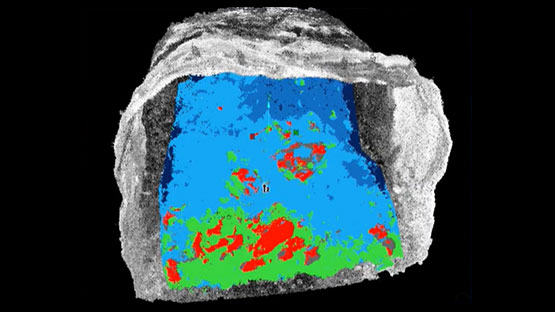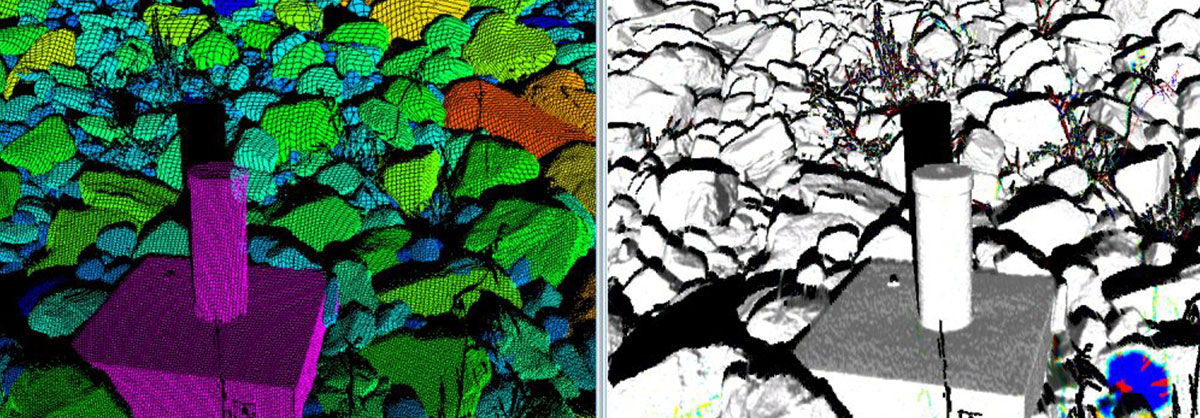December 2020 Issue Index
Fragmentation solutions
Improve mining performance by quickly producing accurate and detailed fragmentation analysis from 3D point clouds.
Maptek fragmentation solutions allow users to improve digger and haul fleet productivity, crusher throughput and overall blast performance by quickly producing accurate and detailed fragmentation analysis from 3D terrestrial or photogrammetric derived point clouds.
Powerful and accurate fragmentation analytics improve productivity and performance from mine to mill. Blasting costs, schedule conformance, dig rates and crusher performance are all affected by fragmentation. Tracking fragmentation metrics on a blast by blast basis can help to understand blast design parameters and the impacts they are having on your mining performance.
Maptek software handles point cloud data of various file formats, and allows integration with third party acquisition devices, such as drones and UAVs.
Two analysis solutions are offered and enabled with Maptek PointStudio software – Fragmentation Analysis, and the machine learning FRAGx solution in collaboration with PETRA.
Spatial analysis

Fragmentation Analysis generates a detailed PDF report on the classification of particle rock sizes, including a table of percentage values to size passing sieve with a corresponding S-curve graph.
Users can quickly view coloured particle rock sizes in 3D, making it easy to characterise any that are not correctly defined.
This approach uses spatial analysis techniques to identify rock sizes, eliminating the need for scale bars in the scene and other perspective effects that may influence 2D image-based fragmentation solutions.
The solution is suitable for anyone with high quality point cloud data from terrestrial LiDAR or UAV LiDAR.
Using PointStudio, 500,000 points can be processed in approximately 4 minutes, with speed dependent on the volume of input data.
Powerful combination
Maptek PointStudio and PETRA FRAGx capabilities combine to enable powerful machine learning fragmentation analysis on a variety of point cloud types.
FRAGx leverages the power and speed of AI by training models for a particular dataset and giving greater data clarity.
It works reliably even on the distorted, noisy or lower precision point clouds often associated with underground working areas.
FRAGx 3D fragmentation assessment removes people from harm’s way by automatically scaling and providing accurate analysis for hard to access areas such as underground drawpoints and open cut cast blasts,’ said PETRA CEO Penny Stewart.
‘Additionally, unlike traditional photography-based delineation techniques, there is no need to manually correct the fragmentation assessment,’ Stewart added.
Mine staff tasked with managing fragmentation for blast optimisation, haulage, wall stability or mine-to-mill improvements can access the Maptek solutions.
The 3D visualisation assessment approach is supported by predictive blast analytics offered in Maptek BlastLogic.
- Equipment productivity, crusher throughput and blast performance can all be improved through better fragmentation analysis
- The spatial analysis approach reports on the classification of particle sizes based on 3D point cloud data using PointStudio
- UAV-captured point cloud datasets are used to train the machine learning engine for fast, automatic fragmentation analysis with PETRA FRAGx

